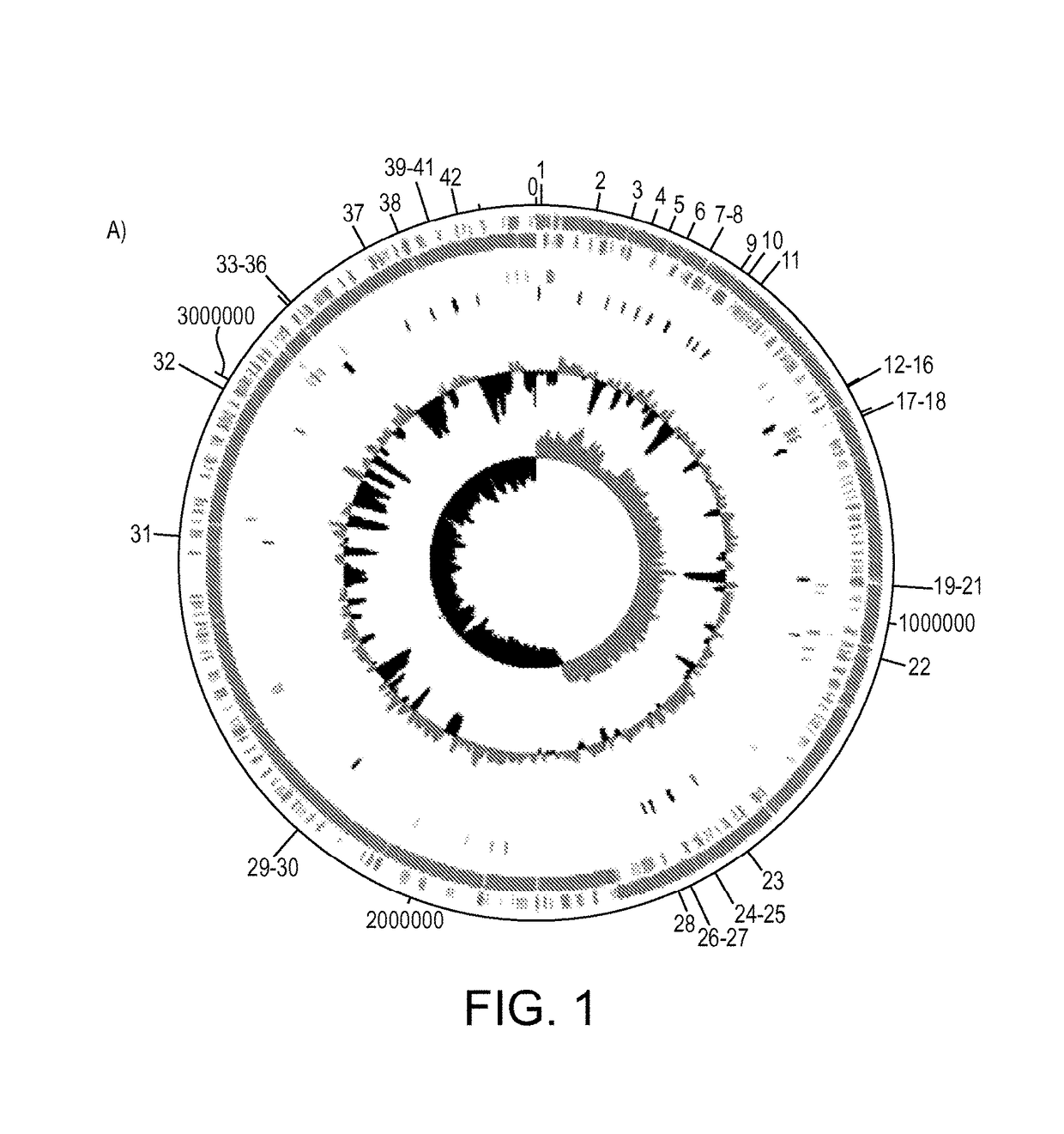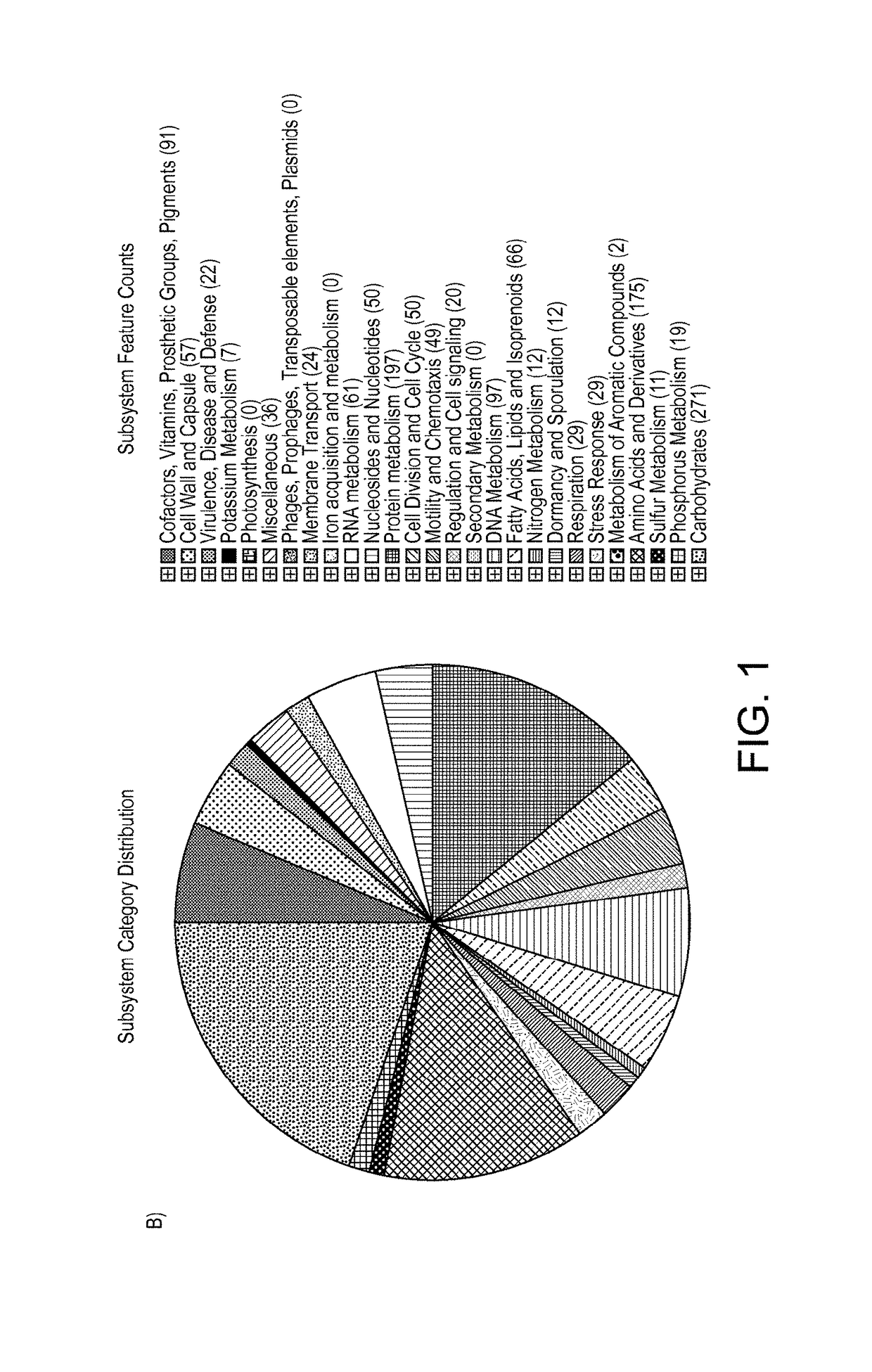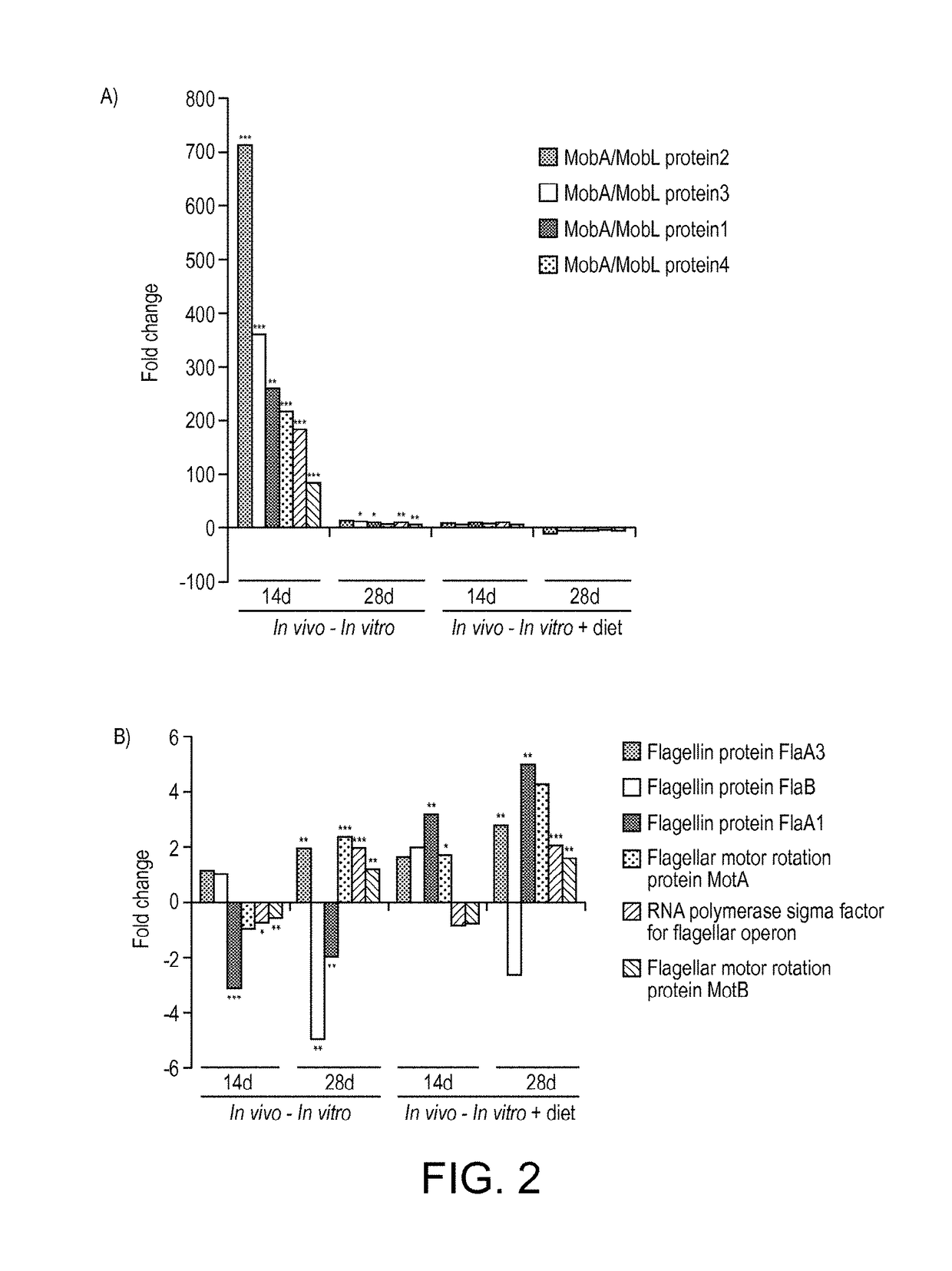Polypeptide and immune modulation
a polypeptide and immune modulation technology, applied in the field of roseburia flagellins, can solve the problems of imbalances and microbial dysbiosis, and achieve the effect of strong elevation of all genes and lower differential gene expression
- Summary
- Abstract
- Description
- Claims
- Application Information
AI Technical Summary
Benefits of technology
Problems solved by technology
Method used
Image
Examples
examples
R. hominis Preferentially Colonizes the Colon
[0594]C3H / HeN germfree (GF) mice were inoculated with three gavages of R. hominis on consecutive days. The inventors report the first successful mono-colonization of germfree mice with a single bacterial species from the Firmicutes phylum. Successful colonization was achieved using an inoculation medium containing 3% ascorbic acid and 2% cysteine to protect this oxygen sensitive bacterium. Analysis of gut tissue by fluorescent in situ hybridization (FISH) revealed that R. hominis colonized both the ileum and colon, but was found in much higher numbers in the colon. Bacteria were also found closely associated with the colonic mucosa (FIG. 8A). Colonization was further validated and quantified by PCR using R. hominis-specific primers with numbers approximating 1×1010 bacteria / g faeces (FIG. 8B-C). Faeces of GF animals tested negative for the presence of any bacteria.
the R. hominis Genome Reveals Unique Genes Promoting Host Interactions
[0595...
PUM
 Login to View More
Login to View More Abstract
Description
Claims
Application Information
 Login to View More
Login to View More - R&D
- Intellectual Property
- Life Sciences
- Materials
- Tech Scout
- Unparalleled Data Quality
- Higher Quality Content
- 60% Fewer Hallucinations
Browse by: Latest US Patents, China's latest patents, Technical Efficacy Thesaurus, Application Domain, Technology Topic, Popular Technical Reports.
© 2025 PatSnap. All rights reserved.Legal|Privacy policy|Modern Slavery Act Transparency Statement|Sitemap|About US| Contact US: help@patsnap.com



